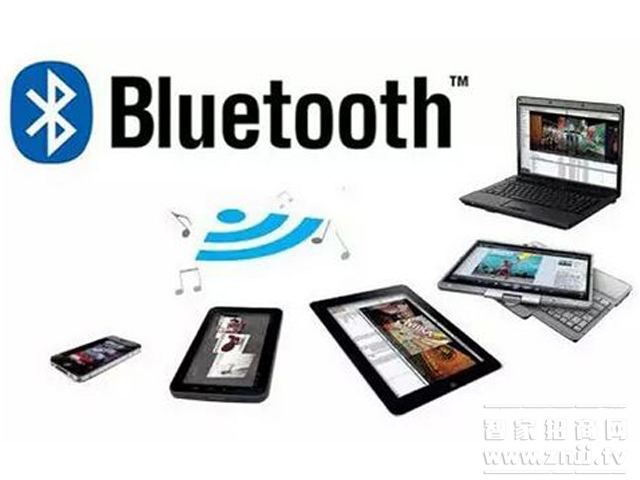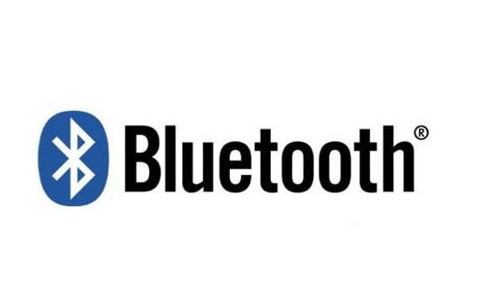Bluetooth
Bluetooth (Blue tooth) is a radio technology that supports short-range communication (generally within 10 minutes) of a device. It can exchange wireless information between mobile phones, Pdas, wireless headsets, notebook computers, and related peripherals. The use of Bluetooth technology can effectively simplify the communication between mobile communication terminal devices, and can also simplify the communication between the device and the Internet Internet, so that data transmission becomes more efficient and efficient. Bluetooth technology began with Ericsson’s 994 solution, which is a method of studying low-power, low-cost wireless communication connections between mobile phones and other accessories. In 1998, Ericsson hoped that wireless communication technology could be named "Bluetooth" by unifying standards.

On May 20th, 1999, Sony Ericsson, IBM, Intel, Nokia, Toshiba and other industry leaders established the Bluetooth Special Interest Group to develop Bluetooth technology standards. Its technical features are mainly applicable in the global scope, and can simultaneously transmit voice and data, establish temporary ad-hoc connection, have good low-power consumption, open interface standards, and have low cost.
Bluetooth first emerged in the mobile phone field. Users familiar with Bluetooth technology knew that Bluetooth technology evolved from the initial paper to the indispensable module in wireless devices, and experienced a process from 1.1 to 4.0 in the middle.
Bluetooth 1.1 : Bluetooth 1.1 is the earliest version of the Bluetooth communication protocol. The transmission rate is between 748 and 810kb/s. Because it is an early design, it is not perfect. Therefore, it is vulnerable to interference from the same frequency products, which affects the communication quality.
Bluetooth 1.2 : Compared to 1.1, the transmission rate of Bluetooth 1.2 has not changed, but with the anti-jamming frequency hopping function added. At the same time, it supports stereo sound effects. It also has better performance in terms of stability and effect, and can be backward compatible with version 1.1.
Bluetooth 2.0 + EDR: Bluetooth 2.0 is an improved version of the 1.2, the transmission rate of 1.8 - 2.1Mb / s, support for stereo sound, there can also be duplex work, that is, voice communication can also transmit high-pixel image. In 2004, the Bluetooth 2.0+EDR standard was introduced. Products that support the Bluetooth 2.0+EDR standard also appeared in 2006. Although the Bluetooth 2.0+EDR standard has made a lot of technical improvements, the problem of the complicated configuration process and the large power consumption of the devices that continue from the 1.X standard still exists.
Bluetooth 2.1+EDR : In order to improve the Bluetooth 2.O+EDR problem, the Bluetooth Special Interest Group has introduced the Bluetooth 2.1+EDR Bluetooth technology. It is fully compatible with version 1.2 downwards, adding Sniff power-saving features, extending the contact time between the adapter and the device to 0.5 seconds, which can save not a small amount of power; enhanced features a simple security pairing (SSP), which improves the Bluetooth device's Pairing experience, while improving the use and safety intensity.
Bluetooth 3.0+HS: On April 21st, 2009, the Bluetooth SIG officially promulgated a new generation of standard specification “Bluetooth Core Specification Version 3.0 High Speedâ€. The heart of Bluetooth 3.0 is Generic. Alternate MAC/PHY (AMP), a new alternative RF technology that allows the Bluetooth protocol stack to dynamically select the correct radio for any task. As a new version of the specification, Bluetooth 3.0 has a higher transmission speed. By integrating 802.11 PAL (protocol adaptation layer), the data rate of Bluetooth 3.0 is increased to approximately 24 Mb/s (ie, 802.11 WiFi can be called for high-speed data transmission when needed. ), which is eight times faster than Bluetooth 2.0, can be easily used for video recorder to HDTV, PC to PMP, and connectionless data (UCD), and includes a set of HCI instructions to obtain the key length. According to reports, a PC equipped with a Bluetooth 2.1 module can theoretically allow Bluetooth 2.1 devices to also support Bluetooth 3.0 by upgrading firmware.
Bluetooth 4.0: Bluetooth 4.0 is a new specification introduced by the Bluetooth SIG on July 7, 2010. It is the only comprehensive protocol specification for Bluetooth since its inception. With low energy consumption and high speed as the main features of the new version of the technology, Bluetooth has a 4.0 era. The most important feature of Bluetooth 4.0 is power saving technology. Extremely low running and standby power consumption can make a button battery work continuously for several years. In addition, low cost and multi-vendor interoperability, low latency of 3 milliseconds, ultra-long distance over 100 meters, AES-128 encryption, and many other features can be used in pedometers, heart rate monitors, smart meters, sensors, and networking. , greatly expanded the application of Bluetooth technology.

Bluetooth Technology Alliance
The Bluetooth Special Interest Group is a multinational organization that aims to develop Bluetooth specifications and promote Bluetooth technology. It owns the Bluetooth trademark, is responsible for the certification of manufacturers, and authorizes them to use Bluetooth technology and Bluetooth logos. As long as companies use Bluetooth-related trademarks to sell products on the market, they must pay trademark fees and product certifications to the Bluetooth technology alliance. cost. Its sponsors are Agere, Ericsson, IBM, Intel, Microsoft, Motorola, Nokia and Toshiba. On October 13, 2006, the Bluetooth Technology Alliance announced that Lenovo replaced IBM’s founding members in the organization and will take effect immediately. In addition to founding members, Bluetooth also includes more than 200 alliance member companies and about 6,000 application member companies.
It is worth mentioning that the Bluetooth technology alliance implements a three-tier membership system: First-tier members pay $10,000 in membership fees each year; second-tier members pay $5,000 in membership fees each year; and third-tier members are free and open. Any company or individual can register, but it must be certified by the Bluetooth SIG when producing Bluetooth products. The test and certification fee for each Bluetooth product of the third-level members or non-members is US$10,000. After years of development, Bluetooth has established four major offices in the world, Seattle, USA; US headquarters, Kansas City, USA; Europe, Middle East and Africa (EMEA) headquarters, Malmö, Sweden; Asia Pacific headquarters, Hong Kong Special Administrative Region of China.
Bluetooth application in smart home
Compared to the smart application momentum of WiFi, Bluetooth seems to be a bit absurd. In fact, Bluetooth is an important communication method in daily life, and it is also a mainstream communication technology for wireless smart homes. Products that integrate this technology include mobile phones, computers, headsets, speakers, cars, medical equipment, and of course home appliances. The smart home design scheme based on Bluetooth technology can make the data collection and home security monitoring flexible and convenient, get rid of the shackles of the wiring system, and at the same time, the frequency hopping technology of Bluetooth improves the anti-interference ability of the system to some extent. In addition, the Bluetooth technology can be directly placed in a small-scale smart home device, and after being improved in terms of security, energy consumption, etc., it is also used in many smart home products such as smart wristbands, watches, smart scales, and smart devices. Knives and forks and so on.
For smart homes, Bluetooth technology has unique identification capabilities as opposed to other wireless technologies. For example, when you walk into McDonald's and your mobile phone is charged in a wireless charging device, the McDonald's system can determine which cell phone the user is using and your seat number. The user can use the mobile phone to complete the order without leaving the seat. Paying.
In addition, the Bluetooth SIG has officially announced the latest Bluetooth 4.1 technology standard. The new Bluetooth technology will support smart wearable devices as well as other devices, allowing these devices to be directly connected to the Internet. Bluetooth 4.0 has a great "coexistence characteristic" with respect to 4.0. When it transmits data simultaneously with LTE radio signals, it can automatically coordinate the transmission information of both and can reduce the interference of other signals to it. At the same time, Bluetooth 4.1 technology will further increase the connection speed and make devices based on this technology more intelligent. In addition, it also minimizes the time between reconnections between devices, and the response time is shorter than Bluetooth 4.0. In order to adapt to the new era of multi-device connection requirements, Bluetooth 4.1 is highly effective in improving transmission efficiency, enabling simultaneous sending and receiving of information between devices while multiple devices are simultaneously connected.
For more information on smart door lock parameters , click here!
We design, engineer and fabricate mold tooling, both standard and custom. We continuously design custom tooling to satisfy our customer needs. These tools are built for machines such as Newbury, Autojector, Ameriplas, Multiplas, etc. Our Solidworks 3D design capabilities represent the leading edge in the industry.
We provide training and know-how to our customers. We offer this unique advantage to companies interested in On-site training to assist in the development of in-house capabilities. Our company can become your "over -mold engineering department" and can provide quick turn-around, high quality for customers' the complete cable set with wire harness, plastic, silizone o-ring, metal terminal, or plate, etc. Try to give you the whole supporting service.
Molded Plastic Products,Plastic Box For Cables,Waterproofing Plastic Box,Plastic Connectors,Plastic Cap,Plastic Bushing
ETOP WIREHARNESS LIMITED , http://www.oemmoldedcables.com